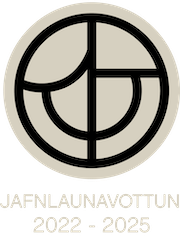Erfðamengi og starfshlutverk við samlífi Nostoc blábaktería - verkefni lokið
Fréttatilkynning verkefnisstjóra
Fæðuframleiðsla með ræktun plantna ræðst að stórum hluta af framboði nýtanlegs köfnunarefnis (N). Frá árinu 1908 hefur Haber-Bosch efnaferlið verið notað til að framleiða áburð fyrir plöntur og talið er að þessi aðferð hafi fætt um 27% mannkyns síðastliðna öld. Aðferðin er hins vegar orkufrek og áburður hefur einnig slæm áhrif á vistkerfið. Það væri því mikill ávinningur af því að geta dregið úr þörf á framleiðslu áburðar.
Rannsóknir á samlífi milli baktería og planta, þar sem köfnunarefnisbindandi bakteríur umbreyta N2 úr andrúmsloftinu í önnur N-efni sem plöntur geta nýtt sér, eru komnar skammt á leið. Þetta ferli gæti þó verið mun betri valkostur en Haber-Bosh efnaferlið til þess að sjá plöntum fyrir köfnunarefni. Samlífi milli nytjaplantna og blábaktería er órannsakaður valkostur en í rannsókninni er ætlunin að kanna ávinninginn af slíku samlífi með tilraunum. Einnig er ætlunin að skoða samþróun þeirra með raðgreiningu til að finna sjálfbæran valmöguleika í stað áburðar.
English:
Research on mutualistic N2-fixation symbiosis, where bacteria convert atmospheric N2 to N
compounds available to plants, as an alternative to the Haber-Bosh process remains understudied. In this perspective, the symbioses between crop plants and Nostoc cyanobacteria found living with plants and lichens represent an unexplored possibility. This study will help explore this question by 1) testing the symbiotic compatibility between Nostoc strains and crop plants to understand the benefits for the plant, and 2) deepen our understanding of their co-evolution by using comparative phylogenomic. We found that all the crop plants tested are
being colonized by Nostoc, but only phylogenetically related strains can penetrate the plant cells. We could not identify a clear growth benefit for the plants (roots or leaves) when grown with Nostoc. However, preliminary results show that Nostoc in combination with N has a synergetic positive effect on plant growth compared to the plant growing with N only.
∙ Information on how the results will be applied
∙ This project will help to understand these symbioses and potentially make advances in expanding
symbiotic N2-fixation to a greater diversity of crop plants, providing alternatives to the use of
fertilisers.
∙ A list of the project’s outputs
Master Thesis: MSc Reynir Freyr Reynisson (1608793869), Cyclic di-GMP in functional transition
of Nostoc cyanobacteria.
Poster at the IceBio 2021 conference: “Artificial symbioses between cyanobacteria and crop
plants”.
Manuscript: Artificial symbioses between cyanobacteria and crop plants: A quest for an
alternative to fertilisers. In preparation.
Heiti verkefnis: Erfðamengi og starfshlutverk við
samlífi Nostoc blábaktería / NoFunGen:
Functional genomics of symbiotic Nostoc cyanobacteria
Verkefnisstjóri: Denis Warshan, Háskóla
Íslands
Tegund styrks: Nýdoktorsstyrkur
Styrktímabil: 2020-2021
Fjárhæð styrks: 19,537 millj. kr. alls
Tilvísunarnúmer Rannís: 207238


